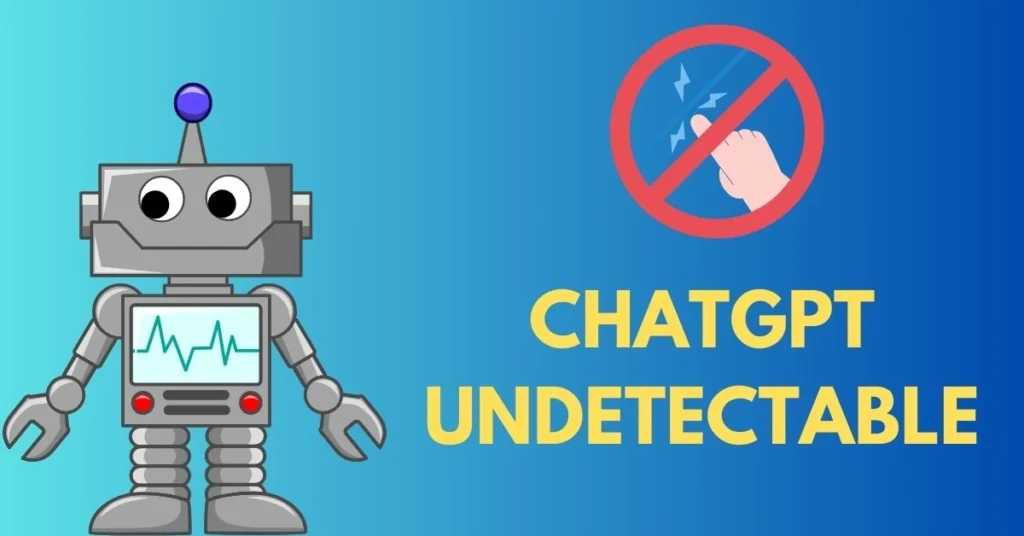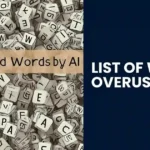Some days, it feels like everything that you do online is being watched even your words. You write something smart with ChatGPT, and “Someone says that looks AI generated”. But here’s the good news: you can stop that from happening.
The trick lies in how you talk to the AI model. This is where prompt engineering in Gen AI systems work best. You don’t need to be an expert to use prompt engineering. If you become a prompt engineer you can take full control and guide the AI into giving desired responses.
OpenAI developed ChatGPT using the GPT architecture. GPT uses a transformer model to create human-like text. It generates responses based on the given prompt. Developers pre-train the model using many examples. This training helps ChatGPT learn language patterns. It then gives more accurate and natural replies. However, tools can still detect these responses as AI-generated. You need to adjust how you use it to make ChatGPT undetectable.
There are some tips you need to know.
Table of Contents
- 1 How can ChatGPT Content be Detected?
- 2 Ways to Make ChatGPT Content Undetectable
- 3 Conclusion
- 4 FAQs
How can ChatGPT Content be Detected?
Various algorithms can detect ChatGPT responses, and while it can be challenging, it’s possible by using a combination of methods. Developers have already built several tools and services to spot this type of content.
Analysis of Languages
Every AI uses certain patterns; they might use certain phrases or words that make them distinct from the human writer. Lack of context given may also be the reason or absence of personal tales. This will show that AI content is more general, which can make it detectable. For this purpose, many ChatGPT best practices are suitable. Human writing style and tone vary more in tone and style, but AI gives an easily detectable and overly consistent tone.
You can try different types of prompts that will help you explore the best of the ChatGPT or any AI model. You can make ChatGPT undetectable by using these best practices of ChatGPT as these practices can help you in achieving your goal.

Analyzing Content
Some AI tools find data about documents and clues about their origin. This helps with AI detection. They check the document’s creation time since AI generates text faster than humans. They also look for a lack of significant changes, which can indicate AI generation.
Computing and Statistical methods
Some tools that can help detect AI-generated content are machine learning and statistical tools. Natural language processing (NLP) models recognize AI-generated content by identifying their origin, specific features, and patterns tools like these also help you in making your text detectable by pointing out the problems. These AI tools measure how predictable each word in a text is and then use that data to separate human-written content from AI-written content.
Since most content today comes from a large language model (LLM), detection systems closely analyze the typical patterns these models follow when generating text.
Operations and Specific Functions
Several free tools are available that detect AI-generated text and identify text from OpenAI’s models. These tools also tell us about our mistakes.
ZeroGPT
This tool identifies text from all OpenAI’s models and is specifically designed for this task. This tool is very useful, and with it, you can correct your mistakes.
Giant Language Model Test Room (GLTR)
This tool mainly uses world predictions to assess if the text is AI-generated; this is almost as accurate as identifying OpenAI’s models. Open also provides tools that detect content generation by its models.
Example of GLTR:
Feed the text to the model; this tool will highlight the text that is AI-generated in this model; green means that the text is likely generated; yellow means it’s somewhat likely; and read means not expected.
Implementation of Technology
Customize the model to fit specific use cases, maximizing the model’s performance and getting the best and most accurate desired output. You can learn prompt engineering and make prompts that minimize the AI detection. You can also use techniques to hide data within the data, which minimizes detection. If you are a creator, these tips to make ChatGPT undetectable can be of great help to you in the distant future. Apply mechanisms to vary responses and avoid detection; this is known as dynamic response generation; it is also an important aspect.
Security Measures
Add encryption to secure communications between the model and users and implement limits to get the best response and avoid detection also use other methods, like machine learning, to evolve your AI assistant into giving the best response and make the text more human-like. This helps mask potential vulnerabilities and hide the result from detection.
Testing and Evaluation
Conduct many stimulated attacks to get to know about the model’s limits and about its vulnerabilities. Apply constant monitoring to avoid any chances of detection. This will use a chain-of-thought prompt, which is one of the types of prompts that enhances the output and gives a more accurate and precise outcome that is relevant. Also, create a feedback loop for you and the model to constantly adapt and evolve for better improvement and quality responses.
Countermeasures
To apply potential countermeasures, you must train the model to resist detection from the adversarial systems develop good prompts and implement dodge tactics that can be used to bypass the detection mechanism. Use a red team to resemble hostile attempts and strengthen the defenses of the system. This will strengthen the model, make the outcome detection-free and make the AI your assistant.
Ethical and Legal Safeguards
This involves putting in place measures to stop abuse, guaranteeing user transparency, and abiding by the law. To become a prompt engineer, you must ensure that you are fully aware of the capabilities of the model’s limitations and the vulnerabilities of the interacting system. Detailed information should be provided according to the relevant context, processing, and usage.
Always use machine learning to identify and flag suspicious or abusive behavior in the response of the system, and also always disclose security incidents as well as misuse cases. Experts can identify a lack of in-depth knowledge in AI-generated content. AI can also make mistakes and give information that is reasonable but wrong.
Ways to Make ChatGPT Content Undetectable

Want to make ChatGPT “undetectable”? It typically means making interactions with it the most natural possible and less similar to something an AI would do. Here are six tips to help with that:
- Speak casually: Make your replies as natural as can be, shunning formal or technical terms, and try to imitate your audience’s style in conversation.
- Add Personal Touches: Add personal touches with anecdotes or details reflecting experiences or opinions unique to a real human. It will also include the mention of specific personal experiences or preferences that drive authenticity.
- Vary sentence structure: Mix up the length and structure of the sentences. Having short, punchy sentences and longer, more complex ones will create interactions that seem more human-like.
- Include Natural Flaws: Small imperfections or natural conversational quirks, like occasional hesitations or self-corrections, make the responses more human-like. This would include things like a “Hmm, let me think” or an “I’m not sure, but I think” for authenticity enhancement.
- Show Humor and Emotions: Adding a bit of humor or showing emotions in a very human way tends to make interactions feel more realistic. Always be cautious with the use of humor to ensure that the context and audience are appropriate.
- Adjust According to Context: Personalize the responses with respect to the context and tone of the conversation. One should adjust the style with respect to the user’s language, mood, and nature of conversation to make it more personal and relevant.
Conclusion
A varied strategy is required to make ChatGPT undetectable. To do this, one must replicate human writing styles, incorporate personal narratives, use a variety of language constructions, and include particular details.
Furthermore, human post-editing can help in introducing organic tone and style changes. Maintaining current knowledge of detecting methods and adjusting methods accordingly is also helpful in guaranteeing the generated content cannot be distinguished from text written by hand.
FAQs
AI-generated content often repeats phrases, keeps an overly constant tone, leaves out personal details, and follows a highly predictable pattern.
To make ChatGPT content more human you can use a paraphraser which changes your words and adds synonyms, varies the tone and style, and gives a few personal details.
You can use tools like GPTZero, GLTR, and OpenAI’s detection tools to recognize content generated by artificial intelligence. These tools examine word predictability, designs, and other characteristics of language.








